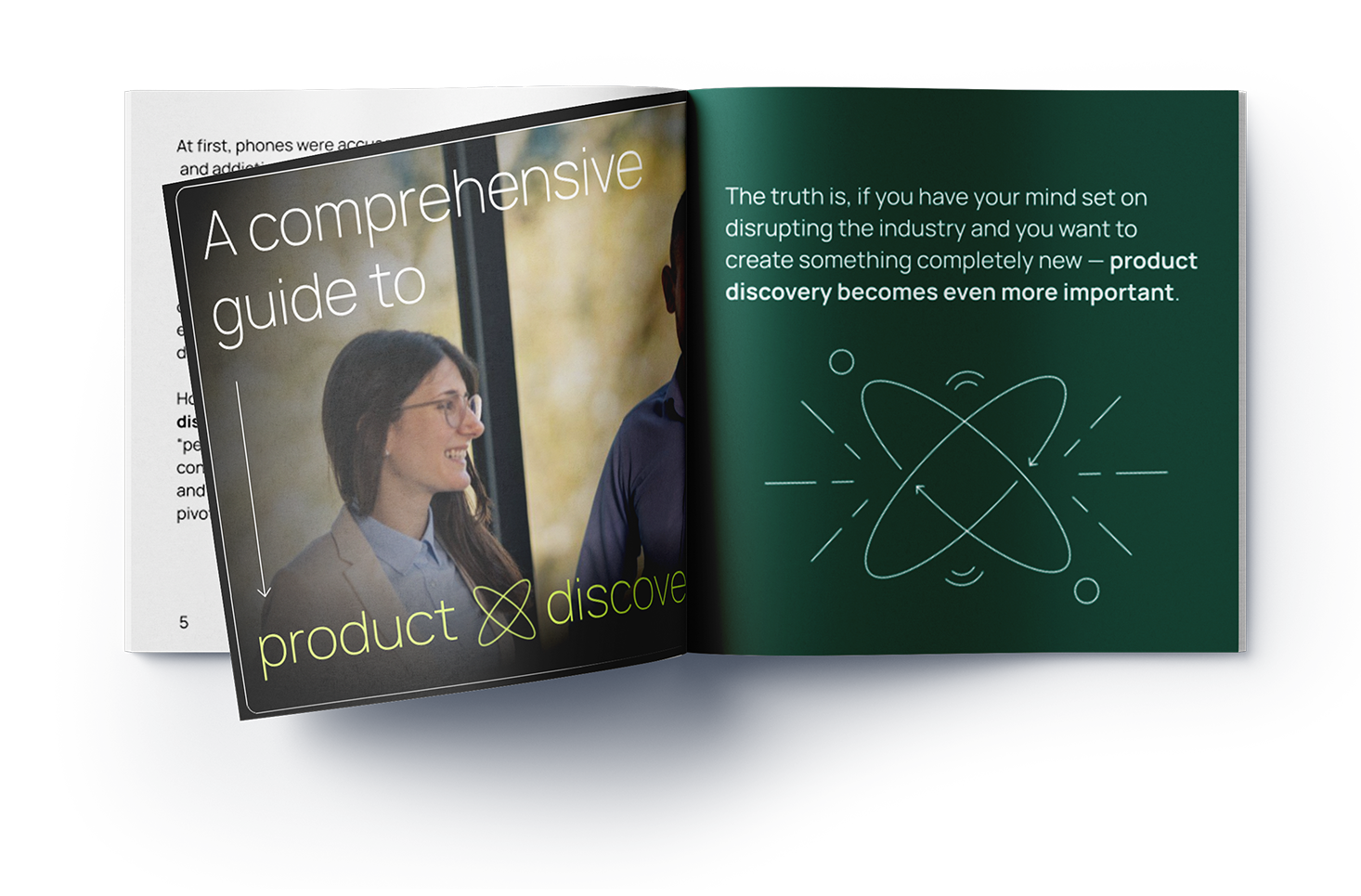Product discovery: Up to 40 tests to achieve perfect market fit
In a recent interview with Netokracija, our Nikolina Belic, explained the specifics of the Principal Product Strategist role. What are the differences between a product strategist's responsibilities at a service company versus a product company? What types of digital products does she typically encounter?
Disclaimer: The interview was originally published by Netokracija.

The understanding of the market defines client relationships
The primary role of a Principal Product Strategist is to define the strategic direction of the company's products or services, ensuring alignment with market demands and business goals. The strategist is responsible for developing, implementing, and continuously improving strategies that guide product development, market-entry, competitiveness, and any potential market expansion.
For this position, understanding market and business needs is crucial, identifying opportunities for innovation and/or better market positioning, while meeting the highest quality standards, regulations, and customer satisfaction. Ultimately, any product or service that shows up on the horizon is designed to help end users overcome a certain challenge. On the other hand, businesses that identify and address those challenges have an opportunity to stand out and secure their position in the market. The focus is always on providing value to end users. Only when the end user getsvalue are they willing to pay goods or services.
Nikolina further emphasizes that the companies developing their products can rely on visual marketing techniques. In contrast, service-based companies must focus on building trust and reputation. They use different marketing means, such as customer testimonials and case studies, to demonstrate their value.
"I have had the opportunity to work in both service-based and product companies.When observed holistically, their approach to strategy development l is very similar. However, due to all the aforementioned differences, the strategies still differ," believes Nikolina.
Analysis and innovation are a match made in heaven
Our client’s strategies typically aim to offer something new and innovative,improve their market positioning, and increase customer engagement. Therefore, clients expect Product Strategists they collaborate with to have an exceptional understanding of market trends, customer behavior, and needs.
The goal is always to create a unique space in the market that highlights the company's advantages and unique values, setting it apart from the competition. How? By defining clear and measurable goals for success, identifying key success indicators, defining the roadmap from idea to realization.
In the end, fresh perspective and inspiration for innovations are expected from me, along with a good understanding of the industry, regulations, and challenges they might encounter.
Addressing customer needs regardless of the product development phase
Product strategists work with companies in all development stages, from startups to enterprises with thousands of in-house employees.
Tailoring the approach tounique product development phases, resources, and challenges is crucial in the collaboration between service-based companies and clients. Strategies, priorities, and expectations vary significantly depending on the product phase, and this largely determines the services this role can offer them.

A comprehensive guide to product discovery
If you have your mind set on disrupting the industry and you want to create something completely new — product discovery becomes even more important. Here's what you can expect to find in our guide: Introduction to product discovery, why product discovery matters, and how to form hypotheses and validate ideas.
Download hereCollaborations with startups require a hands-on, flexible approach with rapid and short iterations based on user feedback and market research. On the other hand, scale-ups have already found the product-market fit and want to focus on efficient scaling and further growth.
Enterprise companies have multiple stakeholders, highermore interests, and more complex processes. They focus on innovation but prioritize optimizing costs and exploring new business models that may bring profit. Working with them, product strategists face the challenge of sparking innovations within the constraints of established processes and outdated systems. Some strategies may involve nurturing a culture of innovation and integrating new technologies to keep businesses competitive.
However, all regardless of their size, these companies share a few characteristics – the importance of communication and alignment of strategic vision throughout the organization. The central focus must always be on addressing customer needs, cost optimization, and opening new profit opportunities. Additionally, adapting strategies to the growth phase of the company, market changes, and feedback received from their customers and end users is important. Developing a strategy for a large insurance company and for a startup wanting to create an innovative product are two completely different processes. They depend on the product type and its current development phase. In short, while the essence of developing a product strategy is creating value and a competitive advantage, the way we collaborate, prioritize, and implement strategies varies greatly between newly established companies, scale-ups, and enterprises.
40 experiments to the perfect product
One of the most illustrative examples of Nikolina's daily responsibilities can be seen in the example of an enterprise company wanting to launch an InsurTech startup.
The new product was supposed to optimize internal operations while generating revenue. This approach required precision and meticulousness during product discovery, as it involved a series of approvals and consents from the company's headquarters, which had to incorporate the agility of a startup into its business.
The first step in developing such a product required a detailed analysis of the client's internal processes that would be the first users, as well as potential external users who had a need for it. By aligning their needs the desired product-market fit. To confirm the feasibility of the project and demonstrate the potential of the solution, Nikolina's team conducted over 40 experiments, which led to the following conclusion: internal processes had many bottlenecks that needed to be addressed, which the development partner had not paid attention to at that time.
This example shows how, even within the constraints of a large enterprise, adopting a startup and lean mentality – characterized by flexibility, rapid experimentation, and willingness to pivot based on evidence – can reveal key insights that guide the product to success.
Expensive and unproductive partnerships are the largest challenge companies face and one of the main reasons they hire product strategists. This role proves once again that fundamental validation and strategic agility in the tech world are crucial for innovation.




